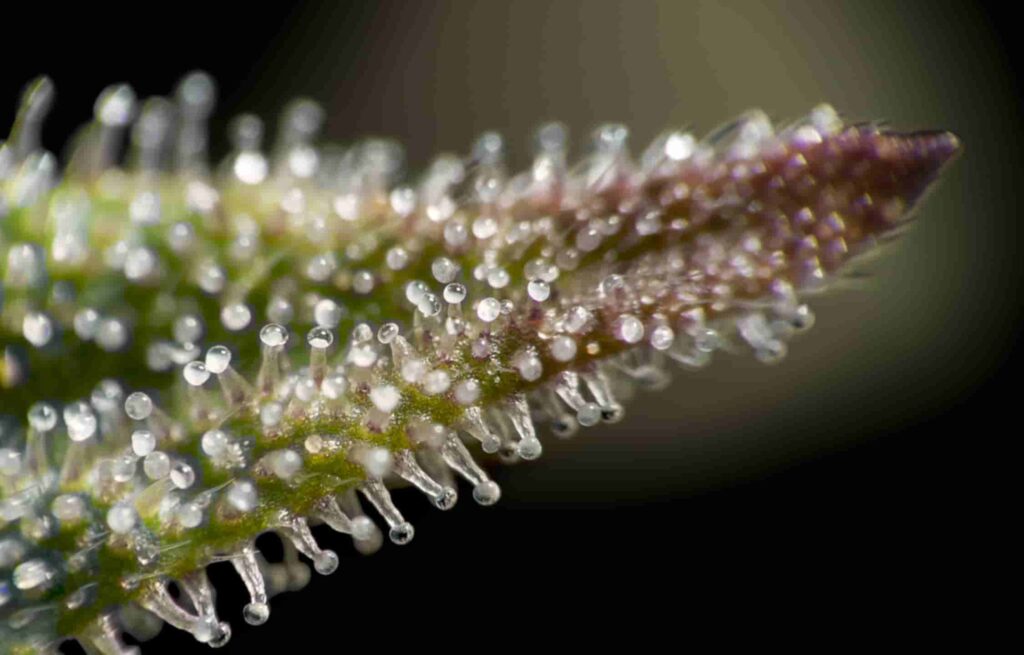The Science of Sticky: Delving into Cannabis Trichomes
Cannabis is a complex and fascinating plant with numerous components that contribute to its unique properties. From its distinct aroma to its varied effects, understanding the anatomy of the cannabis plant is crucial for both enthusiasts and cultivators alike. Among the many components of cannabis anatomy, trichomes stand out as particularly significant. These tiny structures play a pivotal role in the plant’s characteristics and effects, making them a subject of great interest and importance within the cannabis community.
What are Trichomes?
Trichomes are microscopic, hair-like structures that cover the surface of the cannabis plant. These structures are responsible for producing the resinous substance that contains cannabinoids, terpenes, and other compounds. While they may appear small and insignificant to the naked eye, trichomes are essential for the plant’s survival and reproduction. They serve various functions, including protection against environmental stressors and predators, as well as the production of chemical compounds that give cannabis its unique properties.
Types of Trichomes Found in Cannabis
Three main types of trichomes are found on the cannabis plant: bulbous, capitate-sessile, and capitate-stalked. Bulbous trichomes are the smallest and most abundant, found on the surface of the plant’s leaves and stems. Capitate-sessile trichomes are slightly larger and are found on the surface of the flowers. Capitate-stalked trichomes are the largest and most resinous, found primarily on the plant’s flowering tops. Each type of trichome plays a distinct role in producing and accumulating cannabinoids and terpenes.
Functions of Trichomes
Trichomes serve several essential functions within the cannabis plant. One of their primary roles is to protect the plant from environmental stressors, such as pests, insects, and UV radiation. The resinous substance produced by trichomes is a deterrent to herbivores and helps the plant retain moisture during drought. Additionally, trichomes are the primary site for the production of cannabinoids and terpenes, which are responsible for the aroma, flavor, and psychoactive effects of cannabis.
Anatomy of Trichomes
Trichomes have two main parts: a bulbous head and a stalk-like structure connecting them to the plant’s surface. The head contains the majority of the resin glands, where cannabinoids and terpenes are synthesized and stored. Trichomes undergo various stages of development, from formation to maturity, before they are ready for harvest. Understanding the anatomy of trichomes is essential for cultivators to determine the optimal time for harvesting cannabis plants to maximize potency and quality.
Importance of Trichomes in Cannabis Cultivation
Trichomes play a crucial role in cannabis cultivation and harvesting. They serve as indicators of the plant’s maturity and readiness for harvest. The density and quality of trichomes can influence the characteristics of different cannabis strains, such as potency, flavor, and aroma. Additionally, trichomes play a significant role in the breeding and genetics of cannabis, as they contribute to each strain’s unique traits and characteristics. Cultivators must understand the importance of trichomes to produce high-quality cannabis consistently.
Harvesting and Processing Trichomes
Harvesting trichomes requires careful attention to ensure optimal potency and flavor. Common methods include hand-trimming or using mechanical trimmers to remove the trichome-rich flowers from the plant. After harvesting, trichomes can be processed using various extraction techniques to isolate cannabinoids and terpenes for consumption. From traditional methods like hand-rolling hashish to modern techniques like solvent extraction, there are numerous ways to extract and concentrate the valuable compounds found in trichomes.
Medical and Therapeutic Uses of Trichomes
Trichomes contain a plethora of compounds with potential medical and therapeutic benefits. Cannabinoids like THC and CBD have been studied for their pain-relieving, anti-inflammatory, and neuroprotective properties. Terpenes also play a significant role in the therapeutic effects of cannabis, contributing to the entourage effect, which enhances the overall efficacy of cannabis products. From treating chronic pain and inflammation to managing symptoms of anxiety and depression, trichome-rich cannabis products offer a natural and holistic approach to health and wellness.
Conclusion
In conclusion, trichomes are a vital component of the cannabis plant, playing a significant role in its characteristics and effects. Understanding the anatomy and functions of trichomes is essential for cultivators, researchers, and consumers alike. As research in this field continues to evolve, we can expect to uncover even more insights into the fascinating world of cannabis trichomes and their potential applications in medicine, agriculture, and beyond. By unlocking the secrets of trichomes, we can unlock the full potential of the cannabis plant and harness its benefits for generations to come.

Dr. Nicholas Marsh has been a respected board-certified anesthesiologist in Northern Virginia for over 35 years. Recognized as a top doctor by FindaTopDoc.com, his vision for providing top-quality medical services is driven by his passion for patient comfort and dignity.

